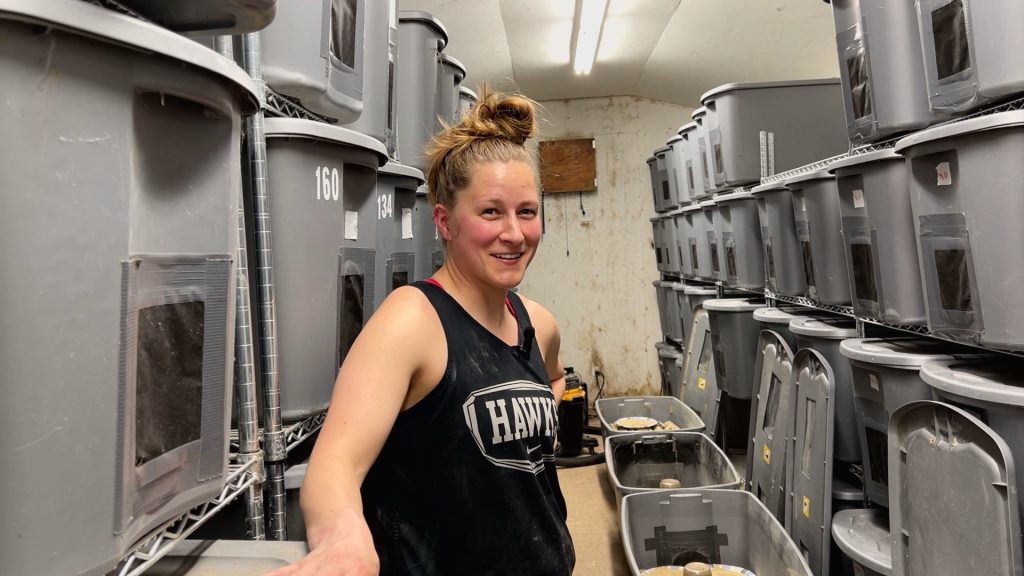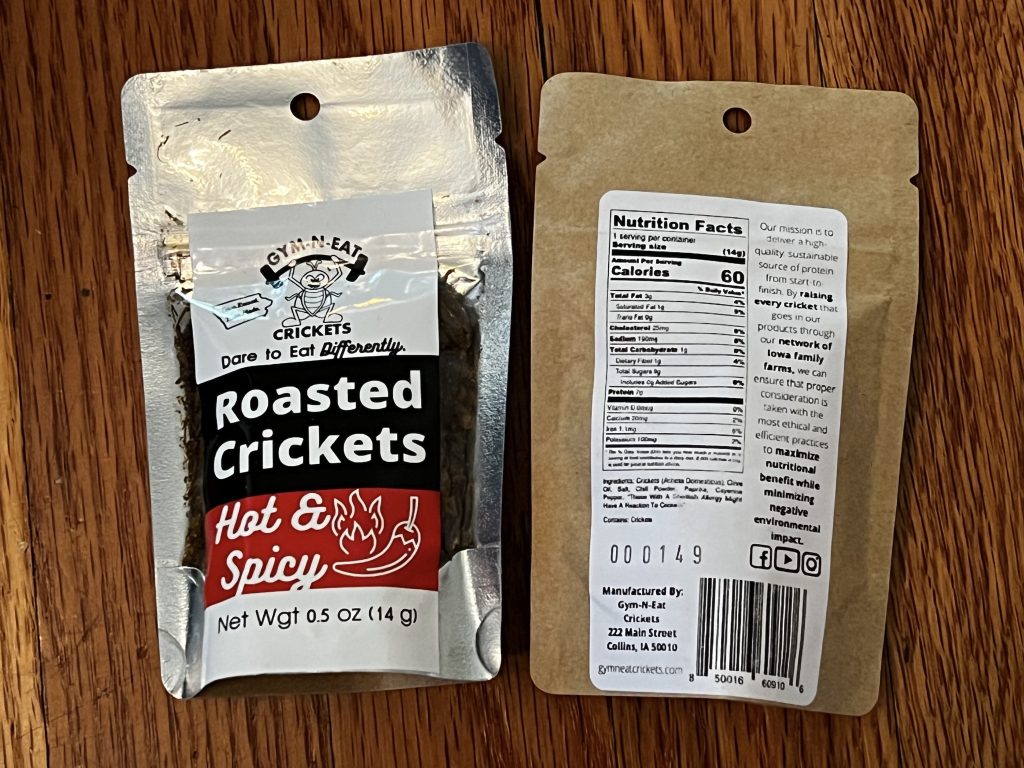Shelby Smith never expected to be a farmer, so it may be fitting that she started a cricket farm. That’s a the kind of farm people in the US never think of, in fact it may not be in the top 100 farms someone could come up with. It’s a niche and yet Shelby is doing it right in the heart of the Midwest — Ames, Iowa.
She describes this space as one changing quickly and compares it to the reality there was a time most Americans probably thought avocados were odd and wondered why others ate them, while some of us now absolutely crave having guacamole now. We talk with Shelby about whether crickets may be the next big thing in foods and why she believes that in this episode.
(An AI generated transcript is available for those who would like it.)
I had crickets as a component of meals or snacks for the first time several years ago — Austin during the SXSW Conference was one of the introductions, but I also had a chance to eat some on the Google campus as part of a Google Food meeting. I’ve find the conversation is limited to audiences on the coast even though right here in St. Louis a company is making cricket protein fortified oatmeal. Appreciate Shelby talking with me as lots of us are interested in how to keep advancing sustainability of our diets. But I admit, talking about crickets as food takes an open mind.
What’s a cricket farm look like?
Having never visited a cricket farm, the only thing I knew about them came from Shelby’s social media. It’s definitely very different from all the other farms I’ve visited. She gives us a tour that lets us see what cricket eggs look like, as well as baby, teen age and a few adults.
And she shares tips in case you want to grow your own! I hadn’t really thought about the fact some people would have pets (usually reptiles) that eat enough growing crickets may be a good idea.
Growing Crickets for Food
Shelby Smith, found cricket farming through listening to podcasts and then started researching things more. Now, she’s been raising crickets for over six years. And she makes snacks with them.
She laughs that people offer to bring her crickets they find but points out knowing where the crickets have been and what they have eaten is a critical piece of producing high quality crickets for human consumption.
The process involves raising crickets from the egg to maturity, harvesting them, and then processing them into various forms of food, such as cricket powder or whole roasted crickets.
Cricket Farm Challenges
One of the biggest challenges in cricket farming is controlling unwanted insects. She says, “It’s important to maintain biosecurity in the cricket farm, which means we don’t allow people who have been to other cricket farms to enter. Also, the farm’s environment is conducive to growing insects, including unwanted species like spiders and beetles. Manual methods like vacuuming and smashing are the only way to control these unwanted insects since there are no specific pesticides that target only those species.”
Shelby also highlights that cricket farming requires attention to potential risks such as power outages or weather events during certain seasons. She says, “We have backup generators and other measures in place to ensure the temperature and humidity stay within the ideal range for cricket growth, even if we lose power. We also monitor weather forecasts and take precautions during certain seasons, such as winter when the natural slowing limits the growth of crickets.”
Small Units of Weight, Big Potential for Growth
When it comes to selling crickets, she deals in pounds which is different from a lot of crops. “Crickets don’t grow as well in the winter, they slow down naturally, circadian rhythm. And also the limitation of the current cricket barn can’t bring in fresh air, so that limits the population size, all of the things. That way they grow much better in the summer. In the winter, if we’re getting over 2 pounds per bin, we’re doing great. In the summer, we can get up in the five to seven pound range, so it’s a pretty big difference. And so that’s where I’m excited for this new barn, because the cricket castle, I built that in the beginning of 2019. I was less than a year into raising crickets. And retrospectively, I had to get a bigger space, I needed more cricket, all of the things, but I also didn’t really know what I needed, what was going to work.”
She’s excited to be increasing her operation significantly now that she’s got a good feel for what works best.
Finding Gym-n-Eats Crickets Online
Gym-n-EatsCrickets.com is the hub for the business. And once cricket harvests start back up, that’s where you can try the various snacks Shelby makes. You can find her on YouTube where she is known as The Cricket Lady. She also has a Gym-n-Eats Facebook page and as I said above, I found her through the Gym-n-Eats Instagram profile.
Connecting with Us
We love that we are always finding new people who are interested in how food is grown and in meetings some of the people who grow it! We’d love to connect elsewhere. Here’s where you can find us:
- GroundedbytheFarm.com is our hub for photos & videos, blog posts, show notes, podcasts are here and more. You can even get new content emailed once a week as we publish by subscribing.
- Find your favorite foods or fun food educational resource information on the website.
- Groundedbythefarm_ on Instagram
- TikTok @groundedbythefarm
- Grounded by the Farm on Youtube
- Grounded by the Farm Facebook Page




